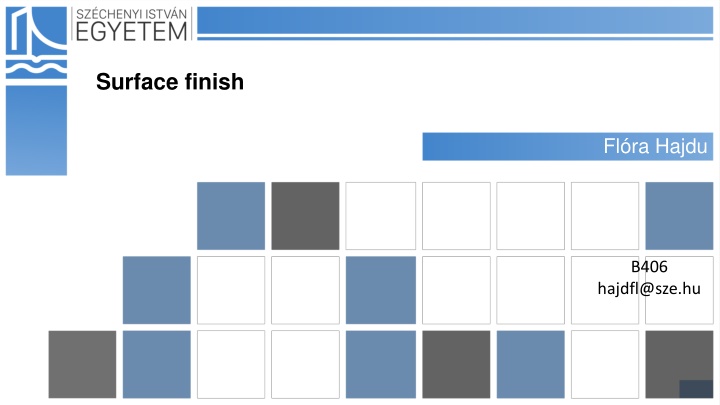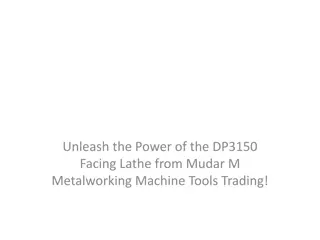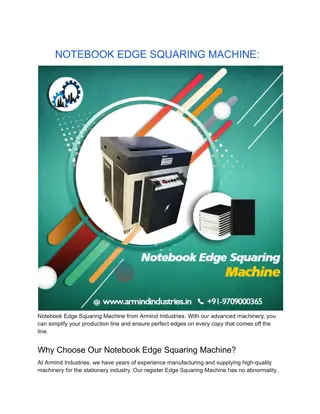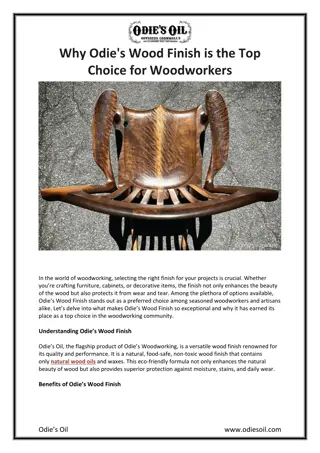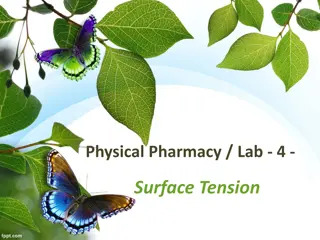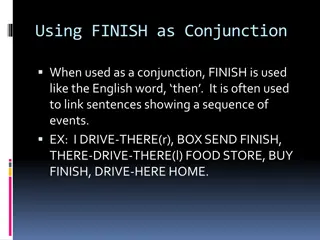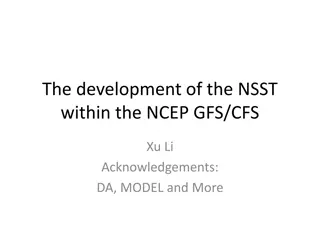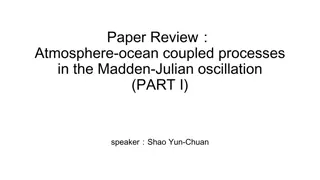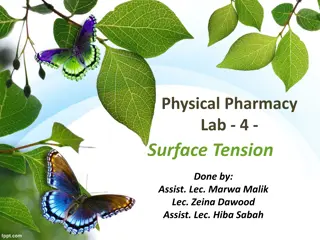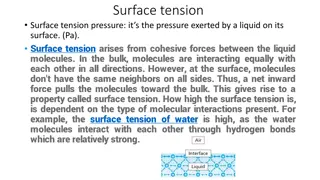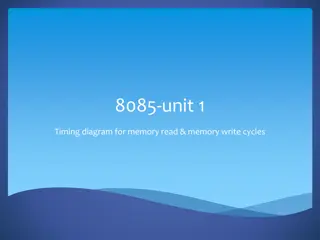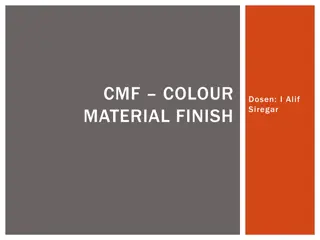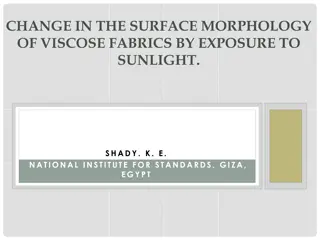Surface Finish in Modern Machine Development
Surface finish plays a crucial role in modern high-speed machines to minimize friction and wear, ensuring maximum performance and service life at a low cost. Factors influencing surface finish selection include size, function, loading type, movement speed, operating conditions, material characteristics, lubricant use, and temperature.
Download Presentation

Please find below an Image/Link to download the presentation.
The content on the website is provided AS IS for your information and personal use only. It may not be sold, licensed, or shared on other websites without obtaining consent from the author.If you encounter any issues during the download, it is possible that the publisher has removed the file from their server.
You are allowed to download the files provided on this website for personal or commercial use, subject to the condition that they are used lawfully. All files are the property of their respective owners.
The content on the website is provided AS IS for your information and personal use only. It may not be sold, licensed, or shared on other websites without obtaining consent from the author.
E N D
Presentation Transcript
Surface finish Fl ra Hajdu B406 hajdfl@sze.hu
Content Surface finish characteristics Surface finish symbol Surface finish on technical drawings Simplifications Technical drawing examples 2025. 02. 20. Hajdu Fl ra
Surface finish Modern development of high-speed machines has resulted in higher loadings and increased speeds of moving parts To withstand these operation conditions with minimum friction and wear a particular surface finish is often essential Specify the right surface to give maximum performance and service life at lowest cost Factors that influence the choice on surface finish Size and function of the parts Type of loading Speed and direction of movement Operating conditions Physical characteristics of both materials on contact Type and amount of lubricant and contaminant Temperature 2025. 02. 20. Hajdu Fl ra
Surface finish characteristics Roughness: consists of the finer irregularities in the surface texture, usually including those that result from the inherent action of the production process. These include traverse feed marks and other irregularities within the limits of the roughness-width cutoff Roughness-Height Value: rated as the arithmetic average deviation expressed in micrometers measured normal to the center line. Roughness spacing: the distance parallel to the nominal surface between the surccessive peaks or ridges that constitute the predominant pattern of the roughness Roughness-Width Cutoff: The greatest spacing of repetitive surface irregularities is included in the measurement of averae roughness height Waviness: usually the most widely spaced of the surface texture components and normally is wider than the roughness-width cutoff. Waviness may result from such factors as machine or work deflections, vibration, chatter, heat treatment or warping strains. Roughness may be considered as superimposed on a wavy surface. Waviness is not currently in ISO standards, it is included as part of the surface texture symbol to reflect present industrial practices in the USA Lay: the direction of the predominant surface pattern, ordinaly determined by the production method used Flaws: irregularities that occur at one place or at relatively infrequent or widely varying intervals in a surface, such as defects as cracks, blow holes, checks, ridges and scratches. Unless otherwise specified the effect of flaws is not included in the roughness height measurements 2025. 02. 20. Hajdu Fl ra
Surface finish characteristics Roughness: consists of the finer irregularities in the surface texture, usually including those that result from the inherent action of the production process. These include traverse feed marks and other irregularities within the limits of the roughness-width cutoff Roughness-Height Value: rated as the arithmetic average deviation expressed in micrometers measured normal to the center line. Roughness spacing: the distance parallel to the nominal surface between the surccessive peaks or ridges that constitute the predominant pattern of the roughness Roughness-Width Cutoff: The greatest spacing of repetitive surface irregularities is included in the measurement of averae roughness height Waviness: usually the most widely spaced of the surface texture components and normally is wider than the roughness-width cutoff. Waviness may result from such factors as machine or work deflections, vibration, chatter, heat treatment or warping strains. Roughness may be considered as superimposed on a wavy surface. Waviness is not currently in ISO standards, it is included as part of the surface texture symbol to reflect present industrial practices in the USA Lay: the direction of the predominant surface pattern, ordinaly determined by the production method used Flaws: irregularities that occur at one place or at relatively infrequent or widely varying intervals in a surface, such as defects as cracks, blow holes, checks, ridges and scratches. Unless otherwise specified the effect of flaws is not included in the roughness height measurements 2025. 02. 20. Hajdu Fl ra
Surface finish characteristics Source: C. Jensen, J. D. Helsel, D. R. Short: Engineering Drawing&Design 2025. 02. 20. Hajdu Fl ra
Roughness values (Average) Roughness height value Peak-to-valley roughness height 2025. 02. 20. Hajdu Fl ra
Average roughness height value ? ? ?? =1 ? ?? 1 ? 0 ? 1=1 ?? 2025. 02. 20. Hajdu Fl ra
Roughness height (peak to valley) 2025. 02. 20. Hajdu Fl ra
Surface roughness range for common production Source: C. Jensen, J. D. Helsel, D. R. Short: Engineering Drawing&Design scan 2025. 02. 20. Hajdu Fl ra
Surface roughness range for common production scan Source: C. Jensen, J. D. Helsel, D. R. Short: Engineering Drawing&Design 2025. 02. 20. Hajdu Fl ra
Surface roughness range for common production scan Source: C. Jensen, J. D. Helsel, D. R. Short: Engineering Drawing&Design 2025. 02. 20. Hajdu Fl ra
Roughness height ratings Source: C. Jensen, J. D. Helsel, D. R. Short: Engineering Drawing&Design 2025. 02. 20. Hajdu Fl ra
Roughness and tolerance scan 2025. 02. 20. Hajdu Fl ra
Surface finish symbol All surface finish should be given scan A: optional material removal B: obligatory material removal C: no material removal Source: C. Jensen, J. D. Helsel, D. R. Short: Engineering Drawing&Design 2025. 02. 20. Hajdu Fl ra
Surface finish symbol A: roughness value in m A-B:specifying minimum and maximum roughness C:manufacturing process, surface treatment D: lay symbol E: machining allowance 2025. 02. 20. Hajdu Fl ra
Lay symbols scan 2025. 02. 20. Hajdu Fl ra
Surface finish on technical drawings The point of the symbol should be located on the line indicating the surface On an extension line from the surface On a leader pointing to the surface or extension line In case of small dimensions it can be placed on the dimension line if it is not ambiguous The symbol applies to the entire surface unless otherwise specified The symbol for the same surface should not be duplicated on other views 2025. 02. 20. Hajdu Fl ra
Surface finish on technical drawings 2025. 02. 20. Hajdu Fl ra
Surface finish on technical drawings 2025. 02. 20. Hajdu Fl ra
Surface finish on technical drawings The surface finish symbols cannot be crossed with other lines, other lines should be broken 2025. 02. 20. Hajdu Fl ra
Surface finish on technical drawings In case of symmetrical parts it is suifficient to give the surface finish only one surface 2025. 02. 20. Hajdu Fl ra
Surface finish on technical drawings In case of surfaces that will be machined together the roughness of all surfaces should be given. Simplification is allowed 2025. 02. 20. Hajdu Fl ra
Surface finish on technical drawings In case of surfaces that have the same dimension, but different surface finish the surfaces should be separated with a thin line and the surface finish should be given for both parts 2025. 02. 20. Hajdu Fl ra
Surface finish on technical drawings On assemlby drawings the surface finish of the assembled surfaces should be given, even if they are the same 2025. 02. 20. Hajdu Fl ra
Surface finish on technical drawings - simplifications Surface finish should not be given on surfaces, if a standard is given on the surface 2025. 02. 20. Hajdu Fl ra
Surface finish on technical drawings - simplifications If all the surfaces of a part have the same surface finish the surface finish should be placed above the title block 2025. 02. 20. Hajdu Fl ra
Surface finish on technical drawings - simplifications Most common surface finish can be given above the title block If there is other surface finish an empty surface finish symbol in brackets should be placed next to it 2025. 02. 20. Hajdu Fl ra
Surface finish on technical drawings - simplifications On assembly drawings the most common surface finish should be given after the item number 2025. 02. 20. Hajdu Fl ra
Surface finish on technical drawings - simplifications The surface finish of connecting surfaces 2025. 02. 20. Hajdu Fl ra
Surface finish on technical drawings - simplifications Surface finish that is repeated several times can be given identified 2025. 02. 20. Hajdu Fl ra
Surface finish on technical drawings - simplifications Surface finish that is repeated several times can be given identified 2025. 02. 20. Hajdu Fl ra
Summary Surface finish Surface finish symbol Surface finish on technical drawings Simplifications
